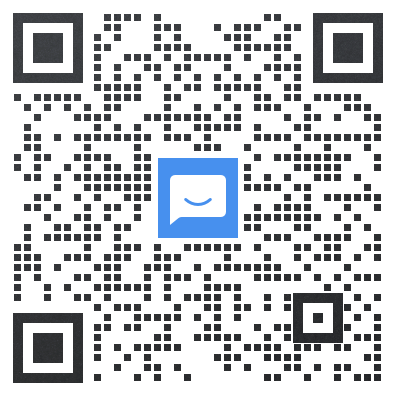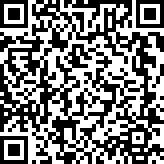BABOK v2知识领域与TOGAF 9之间的逻辑关系
Enterprise Analysis is a knowledge area which describes the Business analysis activities that take place for an enterprise to identify business opportunities, build a Business Architecture, determine the optimum project investment path for that enterprise and finally, implement new business and technical solutions. The question you may ask: Does this really differs from Enterprise Architecture, and if so, how?
At first sight, business opportunities are not always considered as being part of an Enterprise Architecture initiative, more as an activity which should be considered as an input. But let’s look at this in more detail.
Let’s look at this in more detail by way of mapping activities between BABOK v2* and the TOGAF 9 Framework*. The BABOK is the collection of knowledge within the profession of business analysis and reflects generally accepted practices. It describes business analysis areas of knowledge, their associated activities and tasks and the skills necessary to be effective in the execution:
IIBA to the global launch of CBAP certification standards, opengroup to the global launch of TOGAF 9 certification standards
BABOK v2 Knowledge Area
Activity in Enterprise Analysis |
BABOK v2 Definition |
Enterprise Architecture (e.g TOGAF 9) |
Differences, observations |
| Requirements Elicitation |
This describes the interview and research process-how to best extract needs from stakeholders (and even how to recognize needs they don't know they have).Elements such as metrics (tracking the amount of time spent eliciting requirements) and elicitation techniques (prototyping and brainstorming are just a couple) among the topics covered |
Phase A: Architecture Vision is the initial phase of an architecture development cycle. It includes information about scope, the key steps, methods, information requirements and obtaining approval for the architecture development cycle to proceed |
Business scenarios are a useful technique to articulate an Architecture Vision.
A Business Scenario describes, a business process, an application or set of applications enabled by the proposed solution , the business and technology environment, the people and computing components (called “actors”) who execute it, the desired outcome of proper execution
To build such a Business Scenario, workshops with business users (stakeholders) would be organized |
| Business Requirements Analysis |
This describes how to write/state requirements that will meet business needs. Key objectives include methods for prioritizing and organizing requirements, as well as the most beneficial techniques for requirements presentation (including state diagrams, prototyping, data flow diagrams, and process modeling, and more).
Business Requirements for future project investments are identified and documented.
They are defined at a high level, and include goals, objectives, and needs are identified |
Business Requirements are collected from business people during the Architecture Vision’s phase using the technique called Business Scenario (as mentioned above).
That document identifies what will be the business solutions in generic terms |
The Enterprise Architects will define the Architecture Vision phase based on the goals, and objectives of the enterprise gathered from the business.
There are two steps:
1、Business people will have defined the goals and the objectives of the enterprise independently from the Enterprise Architecture team
2、The Enterprise Architecture team which include business people gather the requirements based on the previous activity |
| Enterprise Analysis |
Begins after a Business executive team develops strategic plans and goals
This outlines the crucial (and sometimes political) process of keeping everyone in the loop and on the same page regarding project's direction and progress. This activity delves into such details as the requirements review and approval processes (including record-keeping). |
Most of these activities are taken into ac_countin doing Enterprise Architecture or done directly by the Business executive team before starting an new Enterprise Architecture project |
|
|
Strategic plan development |
|
Done outside of the Enterprise Architecture process by business people but is a key source of information |
|
Strategic goal development |
|
This is done outside of the Enterprise Architecture initiative by business people but is a key source of information |
|
Business Architecture development |
|
Done during Phase B:Business Architecture, looking at the baseline and target architecture, delivering a gap analysis, a plan and a roadmap |
|
Feasibility Studies |
|
Done during Phase A: Architecture Vision (with a Business Scenario) |
|
Business Case Development |
|
Done during Phase A: Architecture Vision (with a Business Scenario) |
|
New Project Proposal |
|
This is done in two steps: during the Phase A where we identify a Business solution and during Phase F; Migration Planning |
|
Selecting and Prioritizing New Projects |
|
This is done in two steps: during the Phase A where we identify a Business solution and during Phase F; Migration Planning |
|
Business Opportunities |
|
This is done during the Phase A: Architecture Vision and the Phase E: Opportunities and Solutions |
|
Launching New Projects |
|
This is done during Phase F: Migration Planning |
|
Managing Projects for Value |
|
This is done during Phase F: Migration Planning |
|
Tracking Project Benefits |
|
Once the project is in production, it is no longer part of the Enterprise Initiative |
| Solution Assessment and Validation |
Details how to choose the best solutions for specific business needs (as well as assessing how well the chosen solution worked after its implementation).This should also cover risks, dependencies, and limitations that must be identified before proposing any solution |
Solutions are identified during Phase E.: Opportunities and Solutions.
This phase is directly concerned with implementation, identifying major work packages to be undertaken and creating a migration strategy.
Risk management, dependencies are taken into consideration. |
|
| Business Analysis Planning and Monitoring |
Explains how to decide what you need to do to complete an "analyst effort" (in other words, how to plan a project). This helps intelligently decide which stakeholders, tools, tasks and techniques we will need to get the job done |
Covered mostly in the Architecture Vision phase, then in the Business Architecture Phase |
Stakeholder management techniques are used within TOGAF, tools and techniques are identified in the Business Architecture phase (modelling, reference models, viewpoints) |
| Requirements Management and Communication |
Describes how to identify business needs (the why of the project; whereas requirements are the how) and state the scope of their solutions. This is a crucial piece of the analyst's work. SMART criteria of measurement, SWOT analysis and other measurement factors that make identifying this root cause data objective and tangible are used |
Business Requirements are collected with the business people during the Architecture Vision’s phase using the technique called Business Scenario (as mentioned above). |
SMART techniques are equally used.
Communication plans are defined. |
This diagram below is a draft map BABOK® and TOGAF 9; more work is required!

Observations
There are obviously overlaps between Enterprise Analysis and Enterprise Architecture, but activities are not always done in the same sequence.
Enterprise Analysis is more a business initiative than an Enterprise Architecture which includes both business and IT people
Enterprise Analysis provides the context in which an Enterprise Architecture should be conducted
Enterprise Analysis is about defining the strategic goals and the strategic planning taking into ac_countthe environment and market trends, identify business issues, focus on remaining competitive, profitable, efficient. Enterprise Architecture is reusing all this information.
Enterprise Analysis is only covering the initial activities of Enterprise Architecture but does not address other Enterprise Architecture activities such as: - Application Architecture, Data Architecture, Technology Architecture (and Solution Architecture).
Enterprise Analysis does not include all aspects related to governance such as the IT Governance and the Enterprise Architecture Governance Framework. Touch points with other frameworks are not addressed.
Enterprise Analysis may not completely address the need of working with other parts of the enterprise such as IT, PMO, development teams, IT partners.
Enterprise Architecture suggest a Preliminary phase which is about defining ‘‘where, what, why, who, and how” Enterprise Architecture will be done, establishing the business context, customizing the framework, defining the architecture principles, establishing the Architecture Governance structure.
Enterprise Analysis complements Enterprise Architecture but also overlaps in some areas. Organization looking into Enterprise Architecture and specifically TOGAF 9 may consider adopting a Business Analysis framework such as BABOK and integrate them in the Preliminary Phase. If both approaches exist in a company, this would be a great opportunity for optimizing the alignment between Business and IT, and to run an Enterprise Architecture program from a complete business perspective.
About Business Analysis Body of Knowledge® (BABOK®)
The Business Analysis Body of Knowledge® (BABOK®) is the collection of knowledge within the profession of Business Analysis and reflects current generally accepted practices. As with other professions, the body of knowledge is defined and enhanced by the Business Analysis professionals who apply it in their daily work role. The BABOK® Guide describes Business Analysis areas of knowledge, their associated activities and the tasks and skills necessary to be effective in their execution. The BABOK® Guide is a reference for professional knowledge for Business Analysis and provides the basis for the Certified Business Analysis Professional™ (CBAP®) Certification.
BABOK® Guide 2.0 represents the development of a common framework to understand and define the practice of business analysis.
About TOGAF™
TOGAF is an industry standard architecture framework that may be used freely by any organization wishing to develop an information systems architecture for use within that organization.
TOGAF has been developed and continuously evolved since the_mid-90’s by representatives of some of the world’s leading IT customer and vendor organizations, working in The Open Group's Architecture Forum. Details of the Forum, and its plans for evolving TOGAF in the current year, are given on the Architecture Forum web site.
About TOGAF Version 9 Enterprise Edition
TOGAF Version 9 Enterprise Edition ("TOGAF 9" for short) is a detailed method and set of supporting resources for developing an Enterprise Architecture. Developed and endorsed by the membership of The Open Group's Architecture Forum, TOGAF 9 represents an industry consensus framework and method for Enterprise Architecture that is available for use internally by any organization around the world - members and non-members of The Open Group alike - subject to license conditions - see Downloading TOGAF 9
As a comprehensive, open method for Enterprise Architecture, TOGAF 9 complements, and can be used in conjunction with, other frameworks that are more focused on specific aspects of architecture or for vertical sectors such as Government, Defense, and Finance
本文来自于艾威培训
转载请注明:https://www.avtechcn.com/share/1334.html
 企业微信客服
企业微信客服














